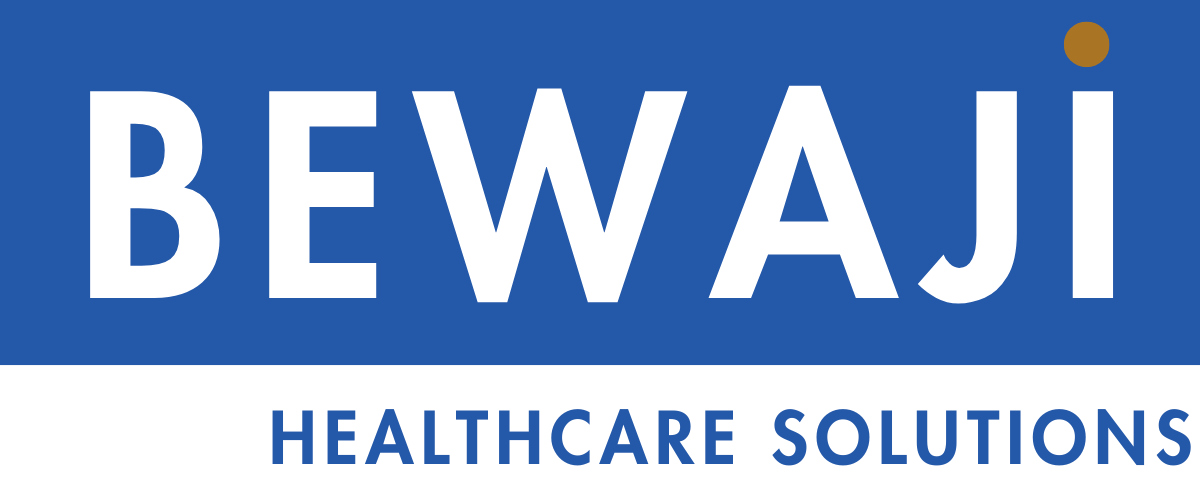3 Healthcare Focused Strategies for Prompting ChatGPT
Artificial intelligence (AI) models promise unprecedented efficiencies and enhanced decision-making capabilities. However, the utility and effectiveness of these sophisticated tools are intrinsically tied to the quality and specificity of interactions with them. This guide explores three strategies for effectively communicating with AI models, emphasizing the pivotal role of precision in queries and instructions.
You may be used to articles that promise top ChatGPT writing prompts for creative inspiration. This is not that. This is more of a hard-nosed look at using ChatGPT and other AI tools in a healthcare setting.
Strategy 1: Give clear instructions
Precision in your requests—whether seeking succinct responses, expert-level discourse, or a specific format—significantly influences the output quality. The model’s performance is directly proportional to the specificity of your directives; the less ambiguity in your instructions, the higher the likelihood of achieving your desired outcome.
Detailed Inquiries: Incorporating comprehensive details within your query can significantly enhance the relevance of the model’s responses. Example A Less Precise: “How do I update patient records?” More Precise: “Detail the steps to update a patient’s medication list in the electronic health record system, ensuring all changes are accurately logged and time-stamped.” Example B Less Precise: “How do I schedule staff?” More Precise: “Provide a detailed process for scheduling nursing staff in the ICU, taking into account shift preferences, patient load, and compliance with labor regulations.”
Specify a persona: Requesting the model to adopt a specific persona can tailor the responses more closely to your expectations. For example: “Act as an experienced healthcare policy advisor and ……”
Structure your input: Using delimiters helps distinctly segregate different input segments, facilitating a more organized analysis by the model. For Example, Summarize the results of the medical investigation delimited by triple quotes (”’) for a layperson with a fifth-grade reading level.
Give examples: Supplying examples can be a benchmark, guiding the model toward the expected response format and content.
Specify response length: Defining the desired output length can ensure the responses are concise and focused, aligning with your informational needs.
Ensure contextual clarity: Ensure the prompt provides enough context for the model to fully understand the request. This could involve setting the scene or providing background information that frames the question or task.
Prompt Without Contextual Clarity: “Provide treatment options for diabetes.”
Prompt With Contextual Clarity: “You are a virtual assistant for a medical professional. The patient is a 65-year-old male with a 10-year history of type 2 diabetes. He is currently on metformin but has expressed concerns about recent weight gain and fatigue. His latest HbA1c levels are 8.2%, indicating suboptimal control of his diabetes. He prefers minimizing medication load and is interested in exploring dietary adjustments and potential lifestyle interventions. Based on this, provide a comprehensive management plan that addresses his current concerns, including dietary recommendations, potential adjustments to his medication, and lifestyle changes. Ensure the plan is tailored to his age, medical history, and preferences.”
Anticipate misinterpretations: Anticipate potential misinterpretations of their prompts and address these in advance. This might involve clarifying common points of confusion or specifying what the model should not focus on.
Prompt Without Anticipation of Misinterpretations: “How do I treat a patient with insomnia?” This Prompt is broad and could lead the model to provide general advice, focusing on pharmacological treatments without considering other important aspects like the patient’s specific circumstances or preferences for non-pharmacological interventions.
Prompt Anticipating Misinterpretations: “You are assisting a healthcare provider in managing a 45-year-old patient’s insomnia who has expressed a strong preference for non-pharmacological interventions due to concerns about medication side effects. The patient has a history of anxiety and is particularly interested in cognitive behavioral strategies and lifestyle modifications. Provide a detailed treatment plan that emphasizes non-pharmacological approaches, specifically cognitive behavioral therapy for insomnia (CBT-I) and lifestyle adjustments, while explaining why these are suitable options given the patient’s preferences and anxiety background. Do not focus on pharmacological treatments unless they are non-standard and specifically align with the patient’s preferences.”
Encourage creativity: Ask the model to generate multiple ideas or solutions for tasks requiring innovation or creativity. This can help harness the model’s potential for divergent thinking and generate various outputs. This can be useful if you’re using AI in medical content creation or ChatGPT for writing patient care scenarios.
Prompt Without Encouraging Creativity: “How can we reduce hospital patient wait times?”
Creative Prompt: “Envision three groundbreaking strategies to reduce hospital patient wait times. Consider solutions that employ technology, process reengineering, and patient engagement in ways that haven’t been widely adopted. For example, you might use AI for gamification techniques to manage patient flow. Describe how each strategy could transform the patient experience and operational efficiency.”
Strategy 2: Use Reference material
Providing reference texts can anchor the model’s responses, reducing the propensity for generating unfounded answers.
Use Reference Texts for Informed Responses: Provide pertinent, verified information relevant to the current inquiry and direct the model to use it to craft its responses. For example: Utilize the enclosed reference materials, marked by triple quotes, to address inquiries. If the required information is not contained within these texts, respond with “Information not available.”
Cite From Reference Texts in Response: The model should include citations in its responses, referencing the provided documents or literature. For example: Provided with a document encased in triple quotes and a related query, your task is to derive answers solely from the document, citing the specific passages used. If the document lacks the necessary information, state “Insufficient information.” Cite using the format ({“citation”: …}).
Strategy 3: Give the model time to think
Break down complex tasks: Segmenting intricate tasks into more straightforward, manageable subtasks can enhance the response. For example, to develop a care plan based on lab results, you can use a two-step prompting sequence: Step 1: “Review the patient’s latest lab results delimited by triple quotes and summarize key findings.” Step 2: “Develop a patient care plan based on the lab results, outlining recommended medication adjustments and follow-up tests.”
Reason from first principles: Sometimes, we get better results when explicitly instructing the model to reason from first principles before concluding. Creating a prompt that encourages a model to reason from first principles involves guiding it to process and evaluate information systematically, similar to how a medical professional would think through a clinical situation.
For example: “Consider a patient presenting with the following symptoms: sudden onset of severe abdominal pain, localized to the lower right quadrant, mild fever, and nausea. Step through the differential diagnosis process from first principles to identify potential conditions. Begin by categorizing the symptoms based on their location and onset, then correlate them with potential underlying causes. Evaluate each possible condition by comparing the patient’s symptoms with typical clinical presentations. Consider the most likely causes given the symptom intensity, location, and associated signs. Finally, suggest the most probable diagnosis and justify your reasoning based on the symptomatology and clinical knowledge.”
This prompt encourages the model to:
Categorize Symptoms: Group the symptoms and analyze them systematically (e.g., location, onset, severity).
Correlate Symptoms to Conditions: Link the symptoms to possible medical conditions that could explain them.
Evaluate Potential Conditions: Compare and contrast the patient’s symptoms with the typical presentation of the potential conditions identified.
Apply Clinical Knowledge: Use fundamental medical principles to assess the likelihood of each potential condition being the diagnosis.
Justify the Diagnosis: Provide a logical explanation of why the chosen condition is the most probable diagnosis based on the symptomatology and clinical reasoning.
Ask the model to double-check its work: Encourage it to revisit its initial analysis or conclusion critically, considering alternative interpretations or additional information that could influence the outcome.
For example: “Based on the initial analysis that suggests a diagnosis of acute appendicitis for a patient presenting with severe right lower quadrant abdominal pain, fever, and nausea, double-check this conclusion. Review the symptomatology and diagnostic criteria for acute appendicitis once more to confirm if all align. Consider the following: Are there any atypical symptoms or factors that might suggest a different diagnosis? Could there be other conditions with overlapping symptoms that should be ruled out? Re-examine the patient’s reported symptoms, medical history, and any available test results. Identify any new insight or overlooked aspect that could affect the initial diagnosis and explain how it influences the conclusion. Ensure that the reasoning is thorough and based on established medical knowledge and practices.”
In conclusion, the interaction with AI models is a continuous journey of refinement and optimization. The iterative process of fine-tuning prompts based on the AI’s responses is essential for honing the accuracy and relevance of the information generated.
Equally important are the ethical implications inherent in leveraging AI within healthcare. The prompts and inquiries directed at AI systems must be constructed with a keen awareness of their potential impact on patient care and data security. It is imperative to ensure that the AI’s outputs do not inadvertently perpetuate biases, compromise patient confidentiality, or lead to decisions that could harm patient well-being.
As we harness the power of AI to enhance healthcare management, it is our responsibility to navigate these ethical dimensions diligently, ensuring that our reliance on these advanced tools improves the quality and integrity of care provided.



